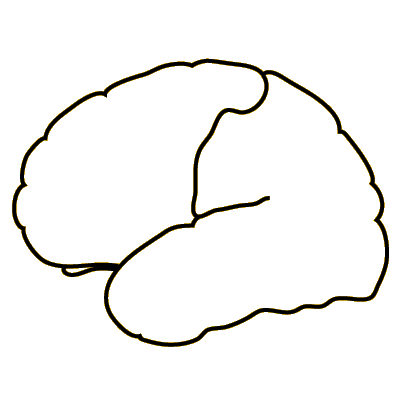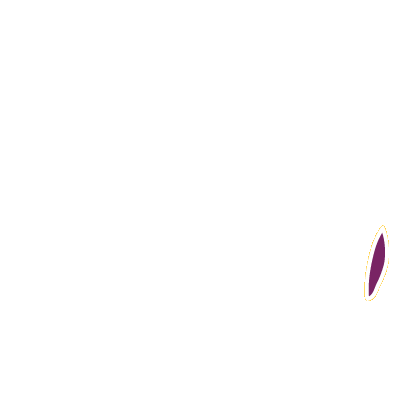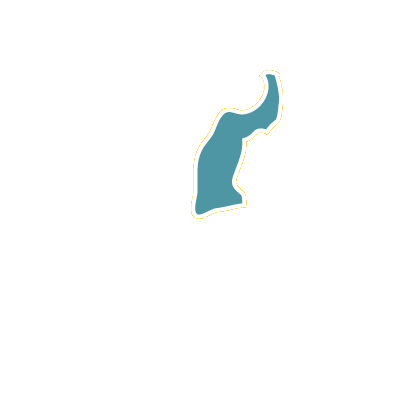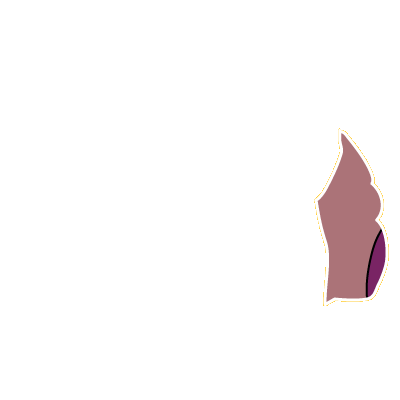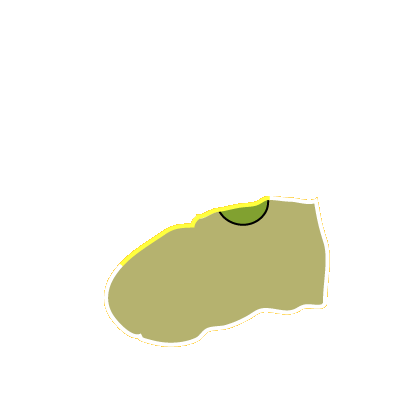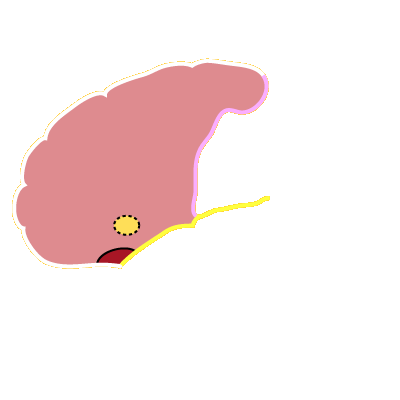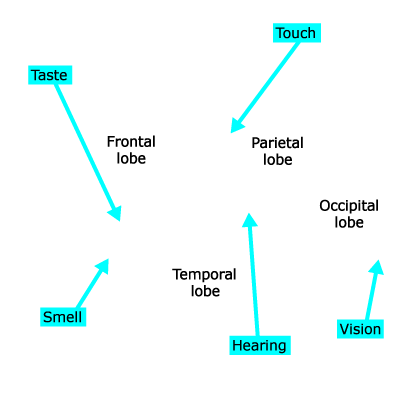Sensory Areas in the Brain
Introduction
The cerebral cortex is the outermost layer of the vertebrate brain. Much of the evolutionary development of intelligence in primates appears to have been driven by increases in the size and complexity of the cerebral cortex. A result of this developmental process is the human cortex, which is roughly the size and thickness of a large dish towel (but intricately folded, so that it can fit inside your head).
This activity will allow you to familiarize yourself with the four lobes of the cortex and get a look at a diagram of where information from the senses first enters the cortex. The four lobes are divided in the figure at left by thick lines, and the primary receiving areas for each sense are shown in darker colors. We will have much more to say in later chapters about the cortical areas that receive and process information from our senses.
Instructions
Click on each lobe and sensory area to view a brief description.
Click the LABELS button to show labels for each cortical area.
Click the “Start Quiz” link to quiz yourself on the structures.
Frontal Lobe
The frontal lobe is, not surprisingly, at the front of your brain. It is separated from the parietal lobe behind it by the central fissure (shown in pink), and from the temporal lobe below by the Sylvian fissure (shown in yellow). The primary cortical receiving area for smell is on the bottom edge of the frontal lobe (pictured in red), and the primary cortical receiving area for taste is located on one of the inner folds of the frontal lobe (pictured in yellow).
Occipital Lobe
The occipital lobe is in the back of the brain. Its borders with the parietal and temporal lobe are nebulous and, indeed, visual information processing that begins in the back of the occipital lobe moves quickly forward into the parietal and temporal lobes.
Parietal Lobe
The parietal lobe is at the top-rear of the brain. The central fissure (shown in pink) divides the parietal lobe from the frontal lobe in front, and the Sylvian fissure (shown in yellow) divides the parietal lobe from the temporal lobe below. The somatosensory cortex, the primary cortical receiving area for touch sensations, is located in the forward part of the parietal lobe.
Temporal Lobe
The temporal lobe is at the bottom of your cortex, behind your temple. It is separated from the parietal lobe above by the Sylvian fissure (shown in yellow). The primary cortical receiving area for hearing is near the center-top of the temporal lobe (depicted in dark green).
Hearing
The primary cortical receiving area for hearing (audition) is located near the top of the temporal lobe, next to the Sylvian fissure.
Smell
The primary cortical receiving area for smell (olfaction) is located on the bottom of the frontal lobe.
Taste
The primary cortical receiving area for taste (gustation) is located in one of the folds of the frontal lobe, behind the area indicated by the dashed line here.
Touch
The primary cortical receiving area for touch is called the somatosensory cortex, and is located just behind the central fissure in the parietal lobe. Your motor cortex, the part of the brain where directions to move your muscles originate, is just on the other side of the central fissure in the frontal lobe.
Vision
The primary cortical receiving area for vision is called area V1 or striate cortex, and is located at the back of the occipital lobe.

